ChatGPT for Your E-Commerce: 5 Top Tips
16/12/22
3'
Are you looking for ways to improve your e-commerce business and provide top-notch service to your customers? ChatGPT, a state-of-the-art language generation model developed by OpenAI, can assist you with various tasks, including generating personalized responses to customer inquiries, streamlining customer service, or creating product descriptions.
In this article, we’ll share top tips and concrete examples for using ChatGPT in your e-commerce business. By leveraging the power of language generation, you can save time and resources while still providing excellent service to your customers.
ChatGPT: What Is It?
ChatGPT is an artificial intelligence (AI) tool developed by OpenAI that uses advanced natural language processing capabilities to generate human-like responses and content. It can be used for a variety of tasks.
By using ChatGPT, businesses can improve the way they work in a number of ways. For example, ChatGPT can help streamline customer service inquiries by providing accurate and personalized responses to customer questions. It can also assist with creating high-quality content, such as social media posts or marketing materials, helping businesses increase their online presence and reach a wider audience.
Thus, by leveraging the power of AI and natural language processing, businesses can save time and resources while still delivering top-notch service.
How ChatGPT Can Improve Your E-Commerce
Here are five top tips for using ChatGPT for a brand’s or retailer’s e-commerce business:
1/ Personalize customer interactions
ChatGPT can be used to provide personalized responses to customer inquiries. For example, if a customer is interested in purchasing a specific product and wants to know if it is currently in stock, ChatGPT can generate a response that includes information about the product’s availability and an estimated delivery date. Similarly, if a customer has a question about shipping times, ChatGPT can generate a response that includes detailed information about the expected delivery schedule. Overall, ChatGPT can greatly improve the customer experience by providing timely and accurate responses to a wide range of inquiries.
Example:
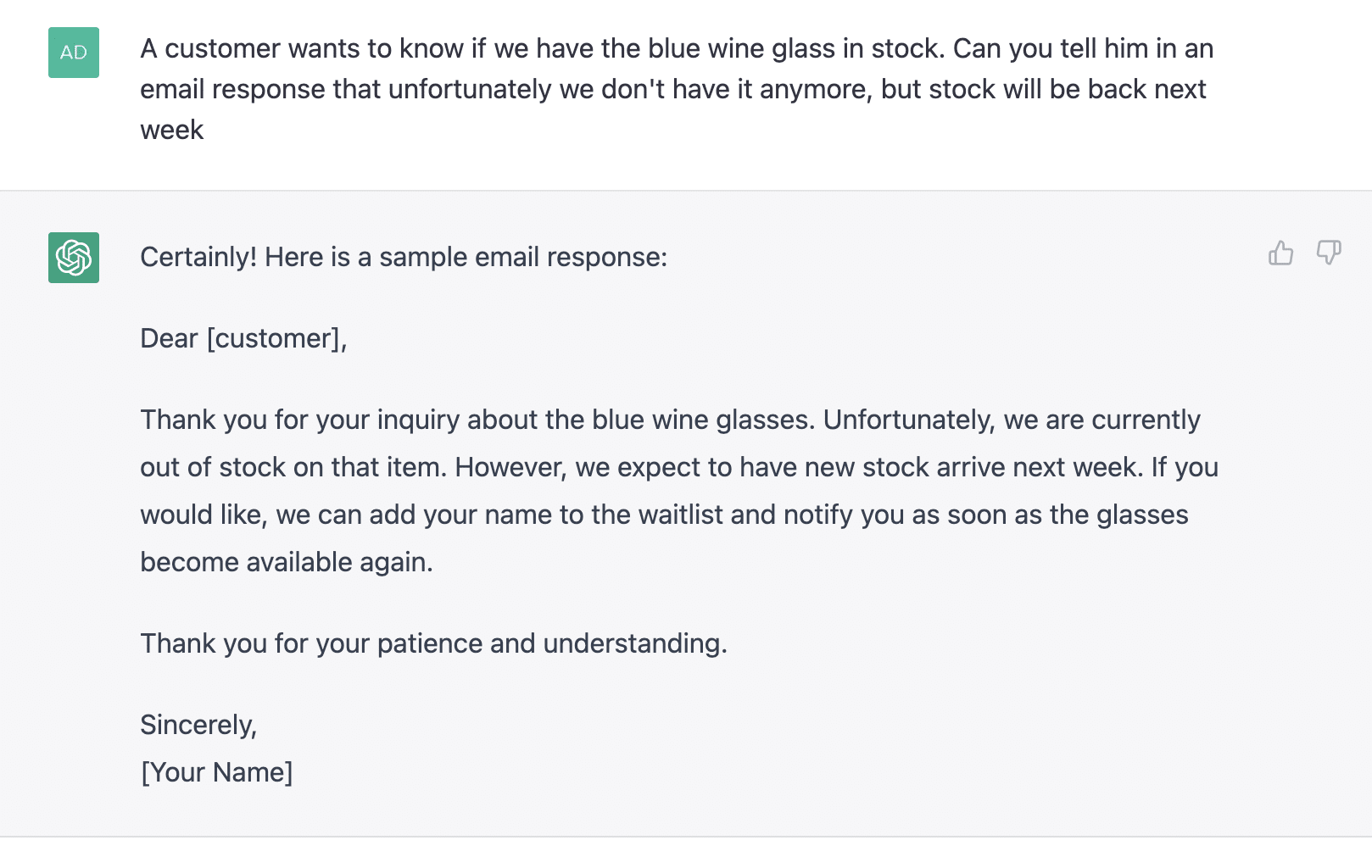
2/ Streamline customer service
ChatGPT can also be used to help with customer service inquiries, such as handling returns or exchanges. For example, if a customer asks about the process for returning a product, ChatGPT can generate a response that outlines the steps for initiating a return, including any necessary documentation or information.
Example:
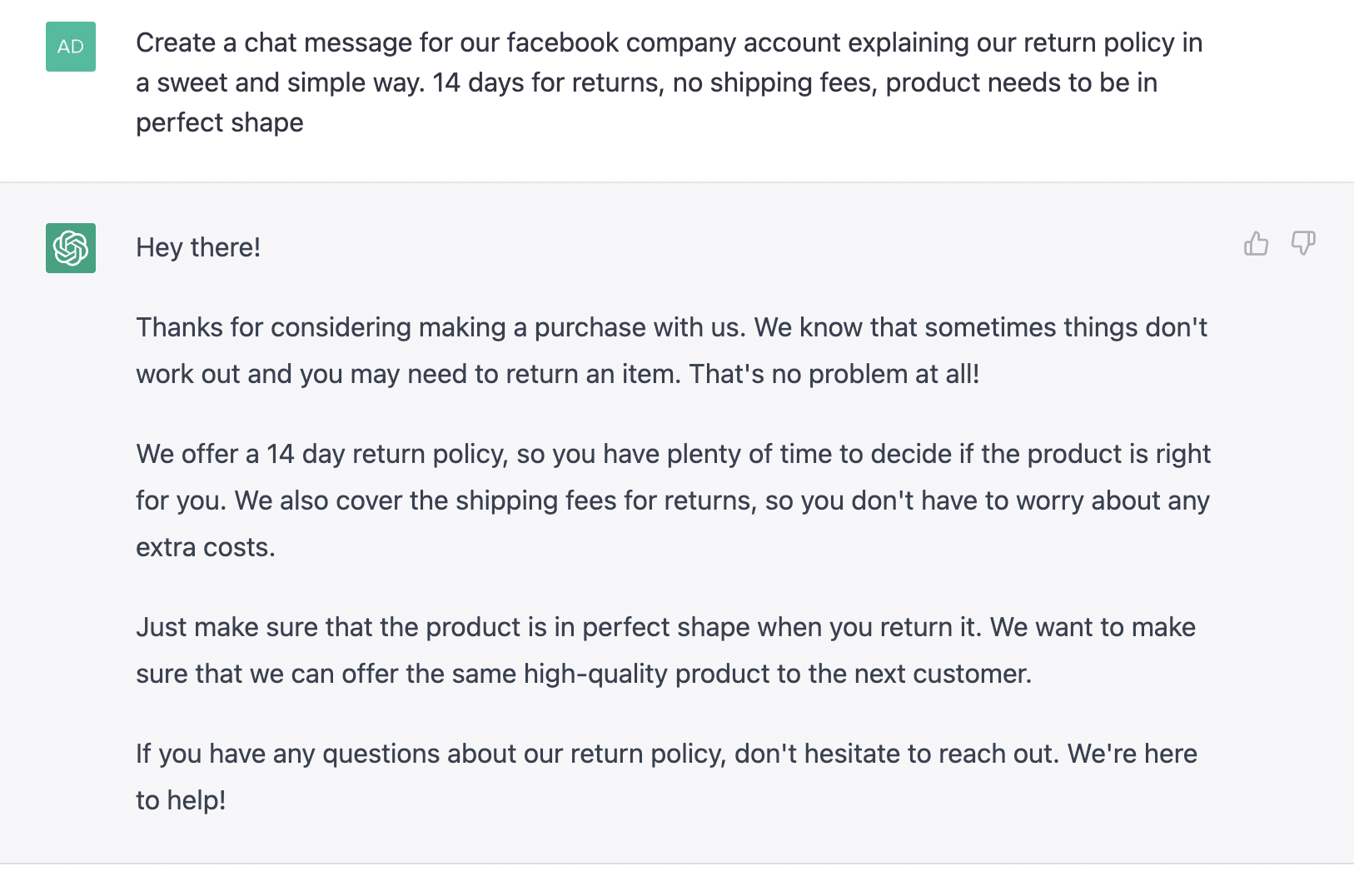
3/ Create product descriptions
ChatGPT can be used to generate effective product descriptions that showcase the unique selling points of a product. For instance, if a fashion retailer is introducing a new line of athleisure wear, ChatGPT could create descriptions that emphasize the moisture-wicking, stretchy fabric, the comfortable fit, and the trendy design of the clothing. These descriptions would not only inform customers about the technical aspects of the product, but also encourage them to make a purchase through engaging language and persuasive storytelling.
Example:
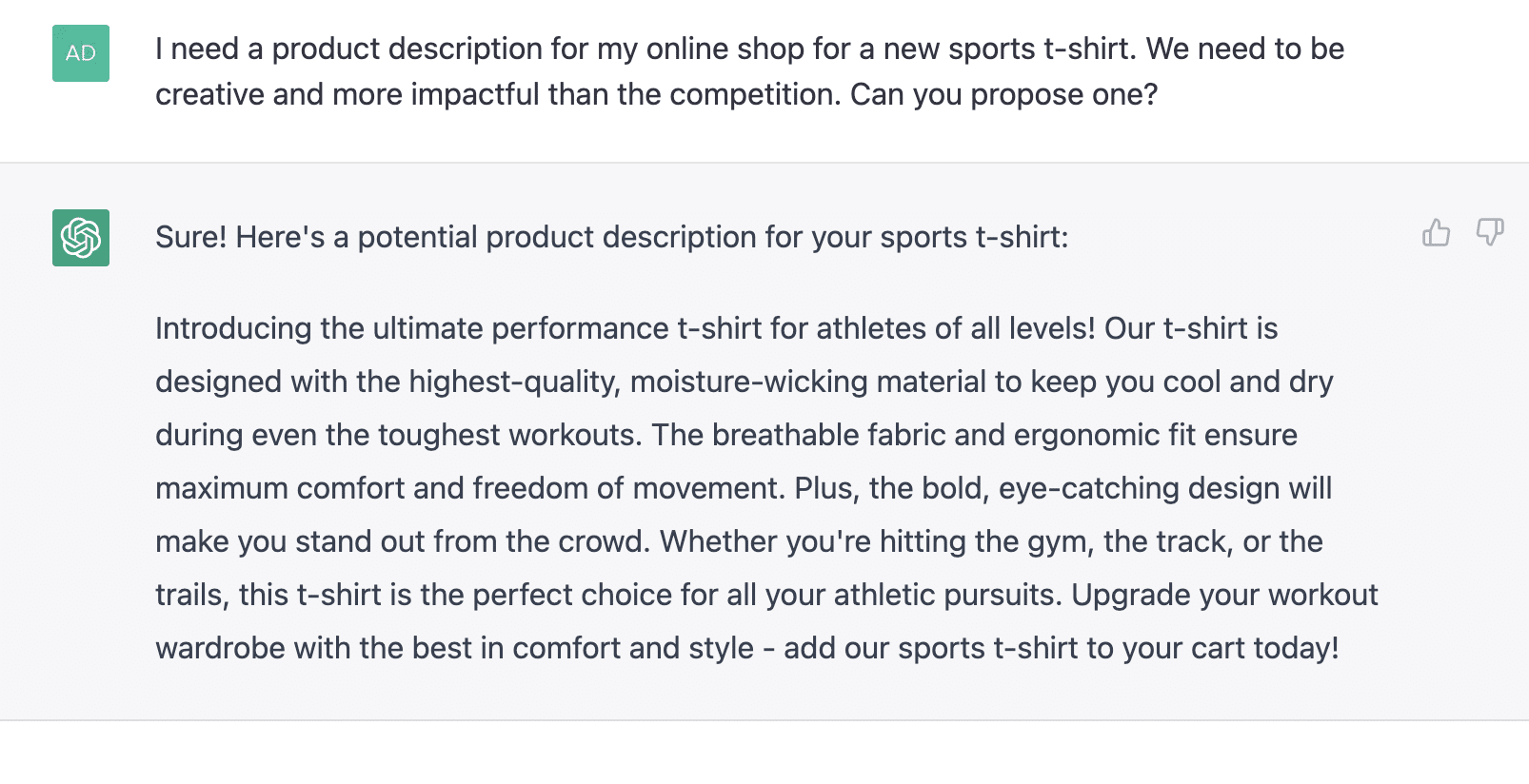
4/ Enhance product recommendations
ChatGPT can be used to generate personalized product recommendations for customers based on their browsing and purchase history. For example, if a customer has recently purchased a particular type of clothing, ChatGPT can generate recommendations for similar or complementary products that the customer may be interested in. This can help increase customer engagement and sales by providing personalized and relevant product recommendations.
Example:
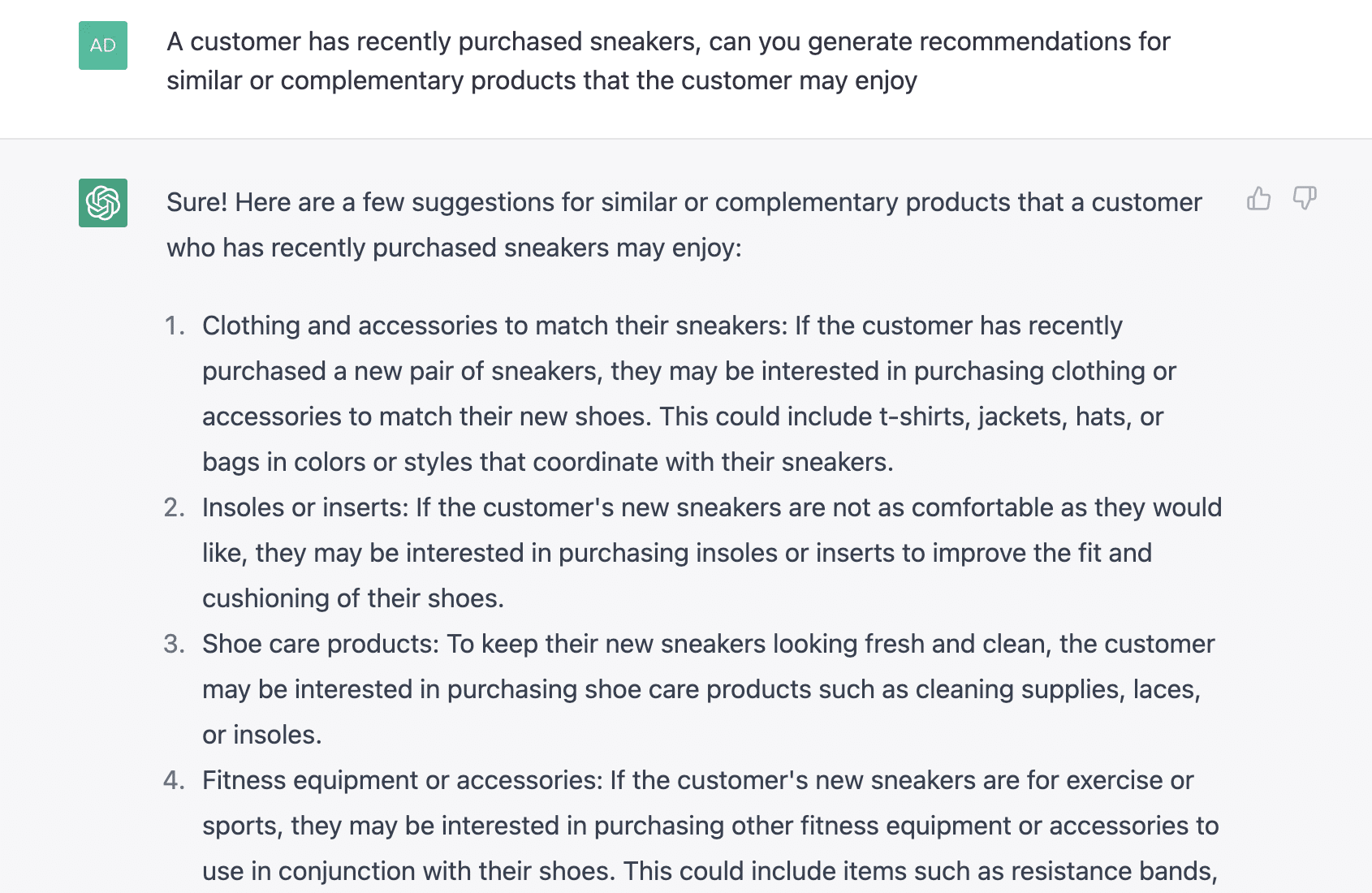
5/ Generate social media content
ChatGPT can also be used to generate engaging content for social media platforms. For instance, if a company is launching a new product, ChatGPT can create a promotional post that showcases the key features and benefits of the product in a compelling and attention-grabbing way. This could include crafting a catchy caption for a product photo or creating a full-fledged post that highlights the product’s unique selling points. By leveraging the capabilities of ChatGPT, marketers can effectively promote their products and reach a wider audience on social media.
Example:
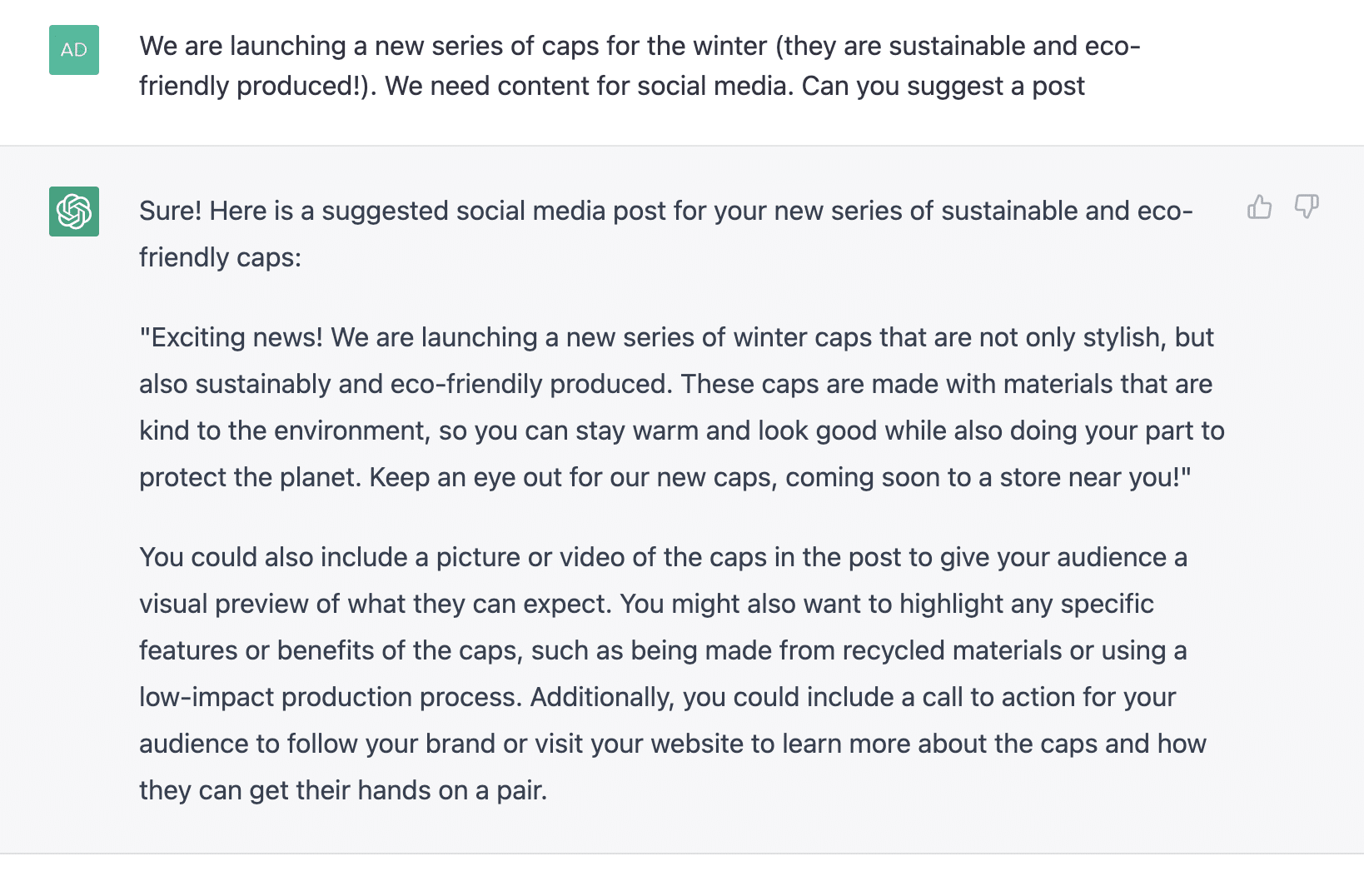
Your e-commerce library
Sign up for our newsletter
By submitting this form you authorize Lengow to process your data for the purpose of sending you Lengow newsletters . You have the right to access, rectify and delete this data, to oppose its processing, to limit its use, to render it portable and to define the guidelines relating to its fate in the event of death. You can exercise these rights at any time by writing to dpo@lengow.com

Trending Posts
Marketing channels
ChatGPT Ads and advertising on GenAI Search Engines: what you need to know
Advertising on generative AI-based search engines (GenAI) marks a new era in digital marketing. After two decades dominated by traditional…
22/05/25
6'
Marketing channels
Reddit and Social Commerce: When Users Take Back Control
Before buying anything, we compare. We hesitate. And more and more often, we end up typing the product name followed…
30/06/25
8'
Marketing channels
How to Sell on TikTok in 2025: The Ultimate Guide to Success
To sell or not to sell on TikTok? That remains a question many brands ask themselves. But here’s what you…
03/02/25
7'
E-commerce Trends
E-Commerce 2025: The New Rules of Digital Retail
What’s going on in e-commerce? A lot. If 2024 was the year brands got comfortable with marketplaces, AI tools, and…
11/07/25
8'
Marketing channels
Omnichannel Strategy: The Best Examples of Successful Brands
Consumers interact with brands through multiple channels, including online, in-store, and mobile apps. More than 90% of consumers expect a…
04/04/25
5'




